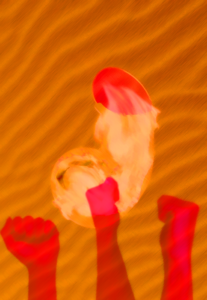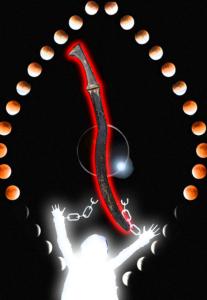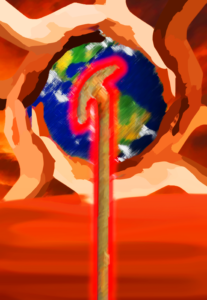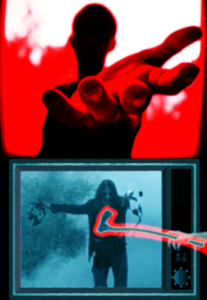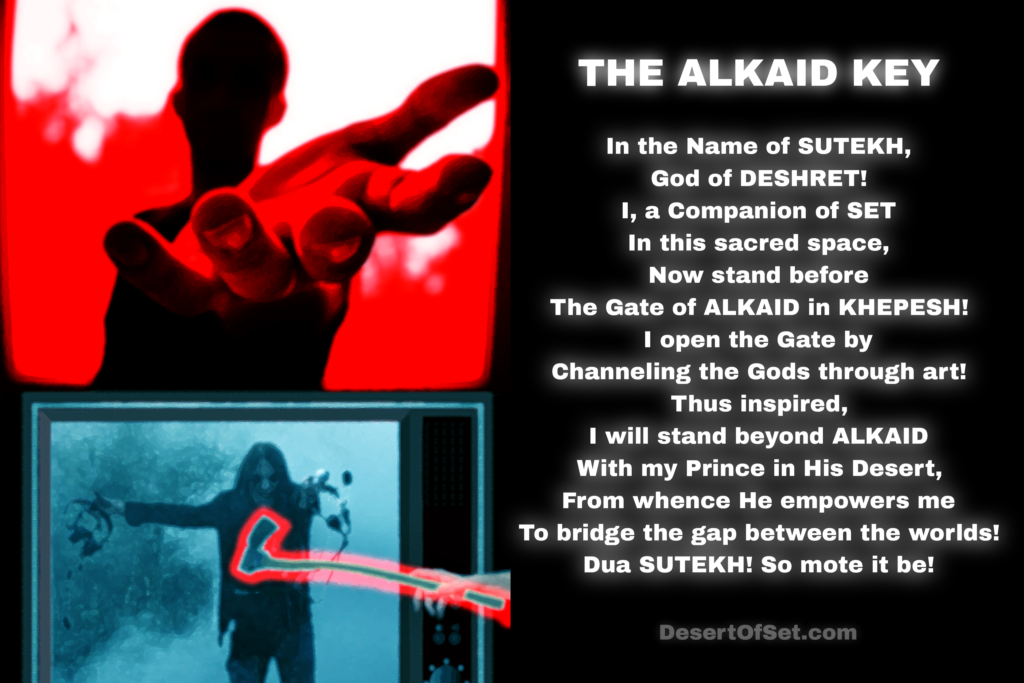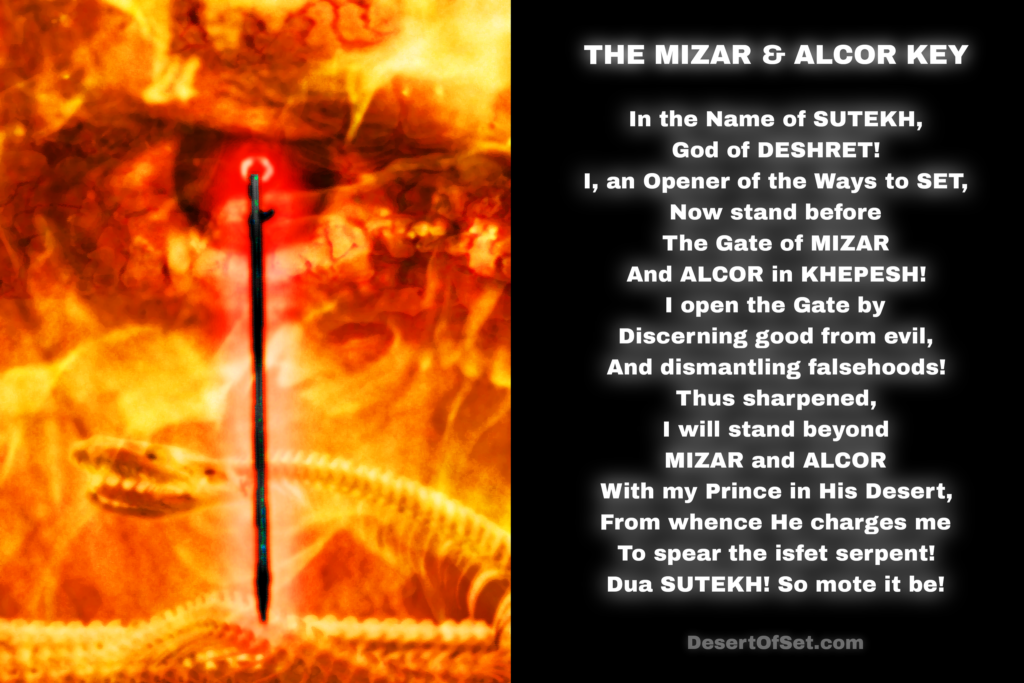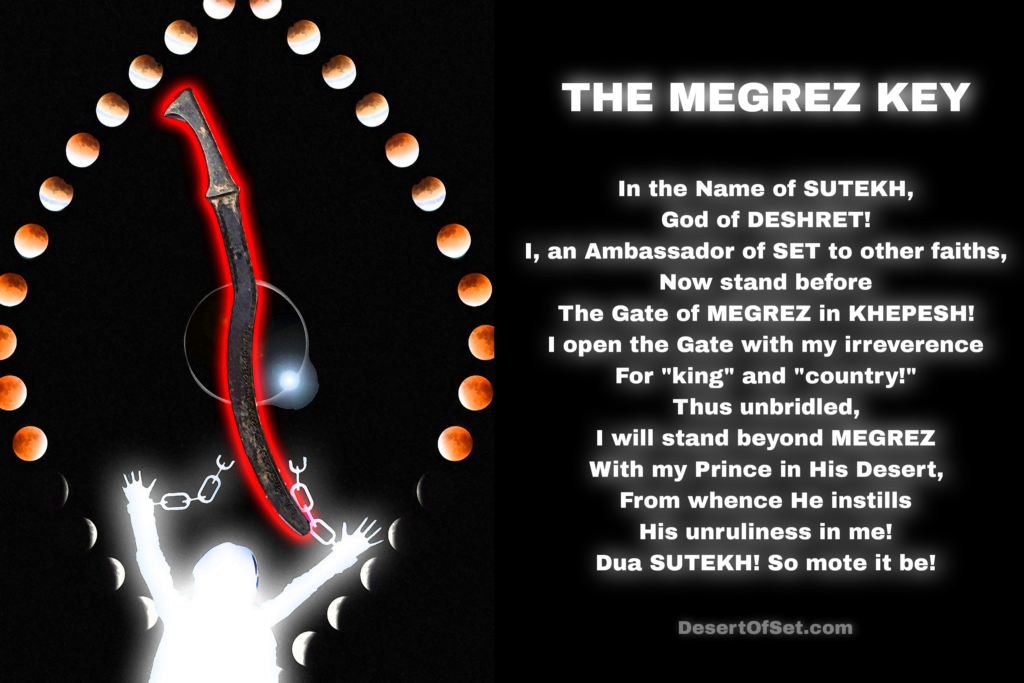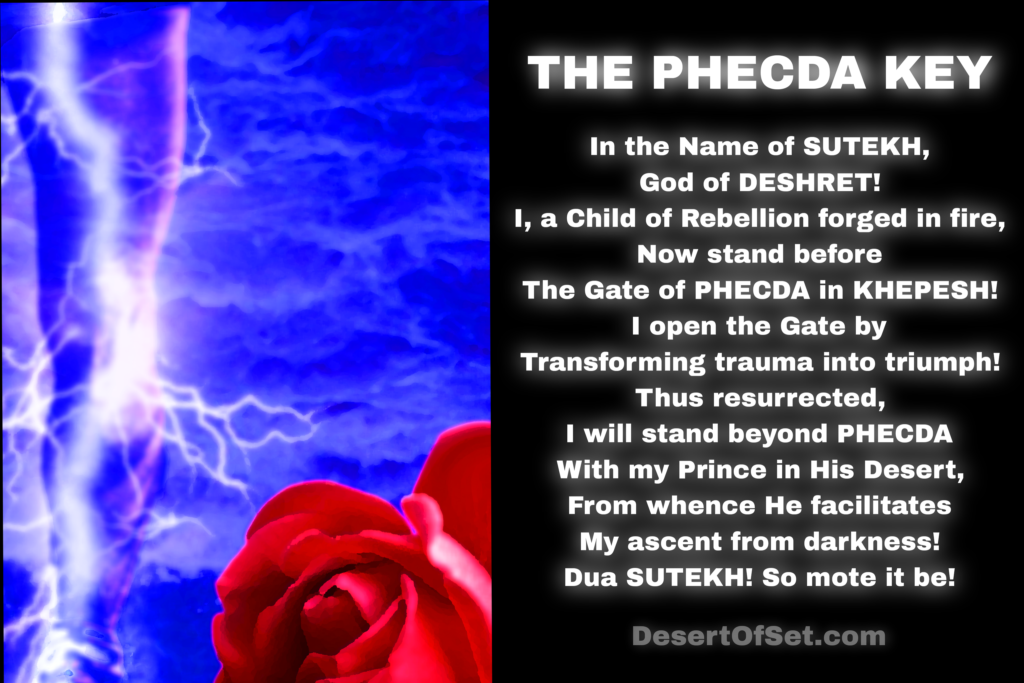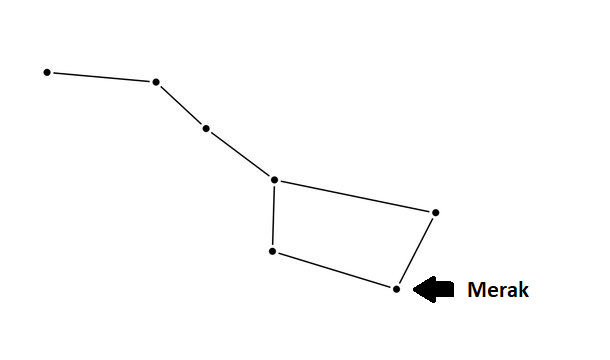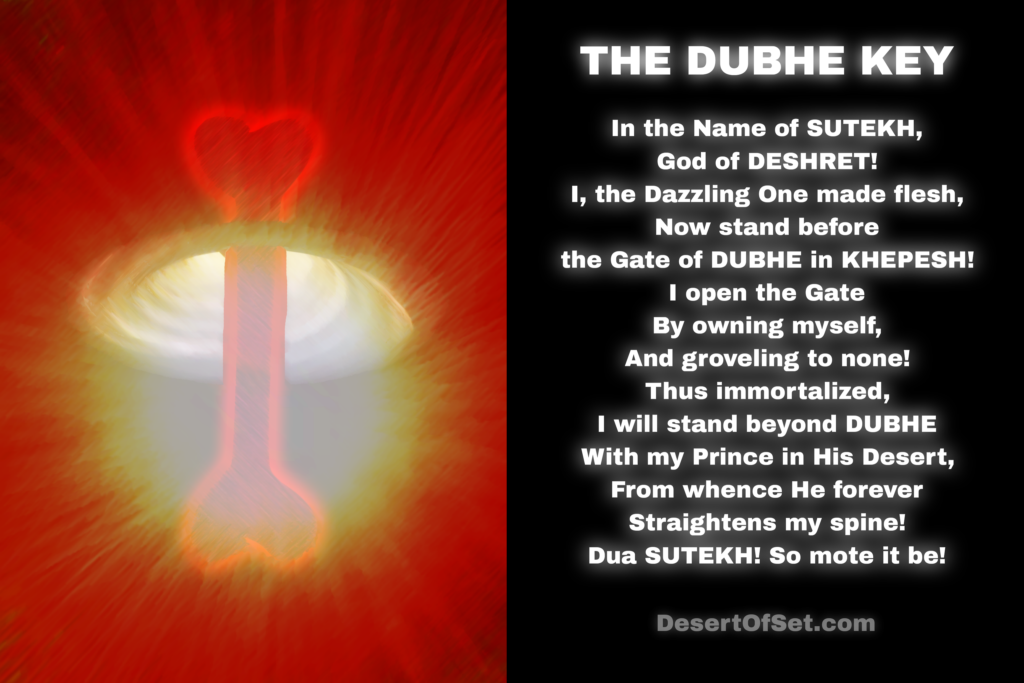An attempt at explaining some key facets of the Setian experience.
Introduction
One issue I have always taken with Hermetic Qabalah is the way in which it purports to “blend” Jewish mysticism, alchemy, Western astrology, and certain polytheistic religions. There is nothing wrong with blending different religious traditions together, of course; but Qabalists often brand themselves as representing “the original Qabalah,” which is absolutely false. True Kabbalah is not a “free-for-all,” but an intricate cosmology that is entirely unique to Judaism. It is also a closed practice that requires studying the Torah inside and out. Hermetic Qabalah is simply a “Gentile” appropriation of this tradition that really has nothing to do with Judaism or the Torah, or with any of the polytheist gods that are commonly mentioned in Qabalic literature.
For example, Kenneth Grant insisted that Set is linked to Daath, the so-called “eleventh” sephira on the Tree of Life. Other writers have linked Set with Geburah, the sphere of divine judgment and wrath. These associations might appear to make sense on the surface, but I think many Jews and Setians would likely agree they are oversimplifications. Set is far more than just an “emotive attribute” of some monotheist god; He deserves to be understood on His own terms, not in Kabbalic (or Qabalic) terms.
Set is not just the destructive “murderer of Osiris” that Hermetic Qabalists like to pigeonhole Him as being. He is also the Son of Nut, the Savior of Ra, the Friend of the Dead, and an ambassador for the Netjeru to other pantheons. Yes, He can certainly hinder and destroy; but He can also help and protect, as evidenced by His own religious following in ancient times. He can become wrathful and go on the warpath, as He does with Osiris and Horus; but He can also be loving and romantic, as He is with each of His various partners (of both sexes). Hermetic Qabalah is ill-equipped to comprehend or explain such a multifaceted polytheist divinity, since it is predicated on monotheism in the first place.
By the same token, SETIANS—people who revere and emulate Set—are not the “black magicians” or “devil worshipers” of Egyptian polytheism. Most of us are regular people just like everyone else in every other religion on earth. We work jobs, we pay our bills, we take care of our families. We value safety and consistency, we become upset when things go topsy-turvy, and many of us work as educators or caregivers as well. So there is quite a bit more to Setians than whatever Hermetic Qabalists might think about us.
I decided to develop a new way of explaining the Setian “wavelength” with numbers and correspondences that does NOT appropriate anything from either Jewish Kabbalah or Hermetic Qabalah. This meant doing away with the “Tree of Life” and using an entirely different visual model as my starting point. And it seemed to me that there is no better visual model for capturing the Setian experience than the Big Dipper, which the ancient Egyptians called Khepesh or “the Thigh of Set.”
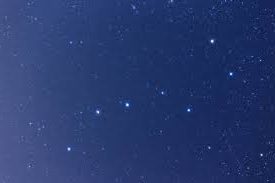
I first learned about Set’s connection to the Big Dipper from reading The Gates of the Necronomicon by “Simon” (who is most likely Peter Levenda writing under a pseudonym). The book recklessly equates Egyptian ideas with bits and pieces of Kabbalah, Daoism, and a “Lovecraftianized” version of pseudo-Sumerian mythology (which actually owes more to August Derleth than to H.P. Lovecraft). Yet the parts about Set being associated with the Dipper are factual at least, and I liked the idea that these particular stars might correspond with certain “astral gateways.” “Simon” claims to be sharing information from a real Sumerian “grimoire” that doesn’t actually exist; so it’s important to understand I am not referring to his work as a credible resource here. Rather, his suggestions inspired me to think about how the stars in the Big Dipper might each relate to Set without needing to appropriate anything from any non-Kemetic or non-Egyptian mystical traditions. I sensed that each of these stars corresponds with a different aspect of Set, a different phase in His myth cycle, a different animal from His divine iconography, and even a different aspect of what it is like to be a Setian.
Please note that this is not a “re-invention” of Kabbalah; nor is it an “initiatory curriculum” that must be followed in sequential order. The numbers I have assigned to each star are simply for convenience. Assuming I am not completely crackers for thinking of the Big Dipper as a series of “Setian gateways” in the first place, I imagine these gates as being “open” all at the same time, with Set reaching down to us and us reaching up to Him through each of them all at once. So here is the skinny on what I like to call “the Seven Gates of Set” (for lack of a better term, and as I have come to conceptualize them at least).
The Alkaid Gate
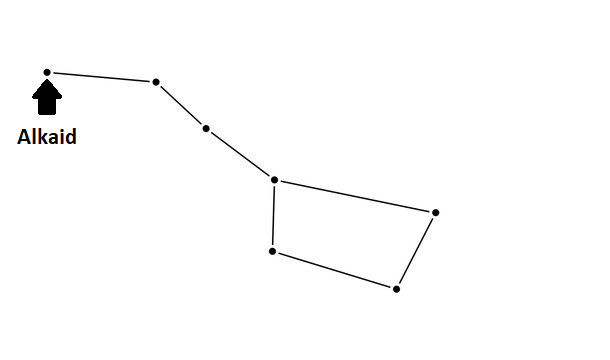 ALKAID, the Mourning Maiden;
ALKAID, the Mourning Maiden;
The Iron Chisel of Set;
Set opening the mouths of the gods;
Set’s sacralizing power;
artistic and funerary practices;
making the mundane sacred;
the tethered Bull.
Alkaid (“The Leader of the Mourning Maidens”) is the outermost star in the “handle” of the Big Dipper. This star relates to Set’s part in the Ceremony of the Opening of the Mouth, in which the gods and/or the dead are invoked into their sacred images. In this way, Alkaid signifies how people create and sacralize art for the gods and the dead. If you have ever drawn a picture of Set and started talking to it while you pray to Him, you have already participated in this process. The same principle can also apply to things that have nothing to do with Set on the surface. With sufficient imagination and intent, even a box of tampons can become a sacred talisman that keeps you mindful of the Red Lord. This is especially helpful to Setians who live in situations where they cannot openly practice their faith. If you are unable to use an icon of Set in your home (for fear that someone might smash it or perhaps even harm you), you could perhaps “open the mouth” of a favorite painting or photograph and use that in your dua (worship) instead.
The “Alkaid” Key (click to enlarge)
The Mizar and Alcor Gate
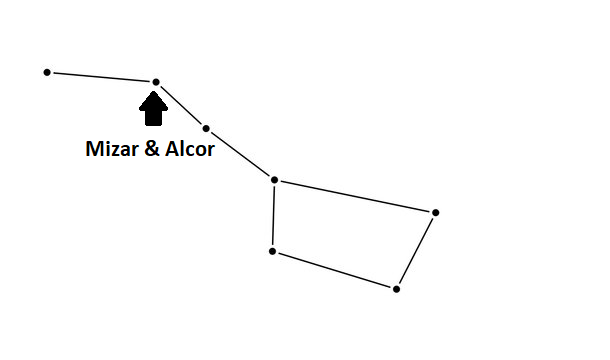 MIZAR and ALCOR, the Horse and Rider;
MIZAR and ALCOR, the Horse and Rider;
the Iron Spear of Set;
Set defending Ra against the isfet serpent;
Set’s sharpness and clarity of vision;
banishings and execrations;
discernment and attention to nuance;
the noble Oryx.
Mizar and Alcor (“Loincloth” and “Orphan,” or “Horse and Rider”) are the middle stars in the “handle” of the Big Dipper. I count them as one here because Alcor is so dim that most people in urban areas do not even know it is there, leading to the popular assumption that there are only seven stars in the Big Dipper (when there are actually eight). If you go camping in the woods at night, and if your eyesight is sharp enough, you can actually see Alcor beside Mizar; you just have to stare long enough to discern between them. Ancient hunters often used Alcor as a kind of “vision test” for this very reason.
I think Mizar and Alcor best relate to Set’s role as the Savior and Defender of Ra. In some accounts, the isfet serpent has a glare that can paralyze most of the gods with existential dread, but to which Set is completely impervious; He just stares that snake in the eye and remains unfazed. Every execration a Setian works to ward off negative energy in their life refers back to Mizar and Alcor, which relate to discernment and the ability to appreciate nuance. While fighting the isfet serpent in our day-to-day lives, Setians must always work to remember that things are seldom ever “black or white.”
The “Mizar & Alcor” Key (click to enlarge)
The Alioth Gate
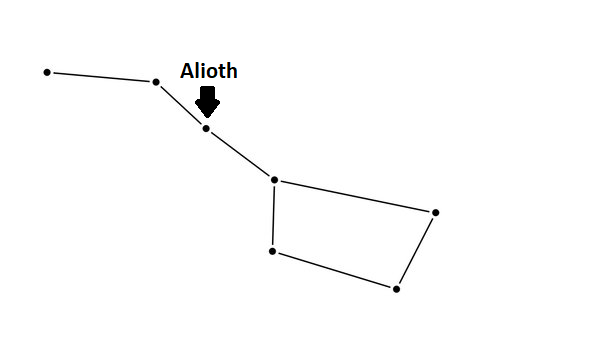 ALIOTH, the Fat from the Sheep’s Tail;
ALIOTH, the Fat from the Sheep’s Tail;
the Iron Scepter of Set;
Set befriending foreign deities;
Set’s intersections with other religions;
explorations of the unknown;
similarities between Setians and others;
the plentiful Boar.
Alioth (“The Fat from the Sheep’s Tail”) is the innermost star on the “handle” of the Big Dipper (or the “tail” of the Great Bear). After He is reconciled with the rest of the Netjeru or Egyptian gods, Set becomes an ambassador for the pantheon and forms alliances with various foreign divinities (including the Libyan god Ash, the Babylonian goddess Ishtar, and even the Hebrew god). His parallels in other faiths can take a wide variety of forms; Western occultists often identify Him with the Christian Lucifer, but He also “intersects” with both Yahweh and Jesus Christ (via the Greek magical papyri and the Alexamenos graffito, respectively). This speaks to the similarities Setians can share with all kinds of religions, as well as to how Set can reach us even when we have never read a single Egyptology book.
The “Alioth” Key (click to enlarge)
The Megrez Gate
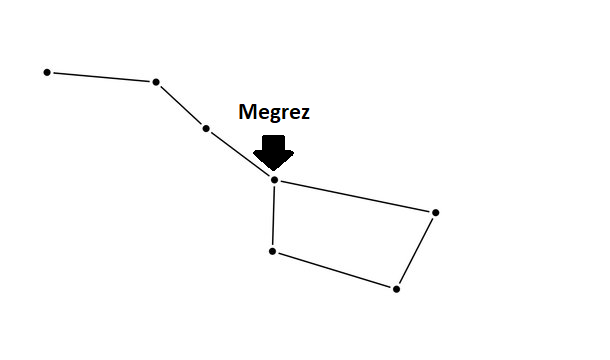 MEGREZ, the Backside of the Bear;
MEGREZ, the Backside of the Bear;
the Iron Sickle-Sword of Set;
Set battling and reconciling with Horus;
Set’s rebellion and unruliness;
contributions Setians make to society;
irreverence for “the way things are”;
the wrathful Hippopotamus.
Megrez (“The Insertion Point of the Bear’s Tail”) is the star on the Great Bear’s backside, forming the “bowl” of the Dipper. I believe this star is best associated with the contentious duality of Horus and Set. Their conflict and reconciliation manifests in how the days grow long, then short again; in the waxing and waning of the moon; and in the twists and turns of various human political tides. In this last context especially, I view Set as a progressive god who wants greater freedom and equality for marginalized people—an agenda that theocratic regimes and privileged elites have always found intolerable.
The “Megrez” Key (click to enlarge)
The Phecda Gate
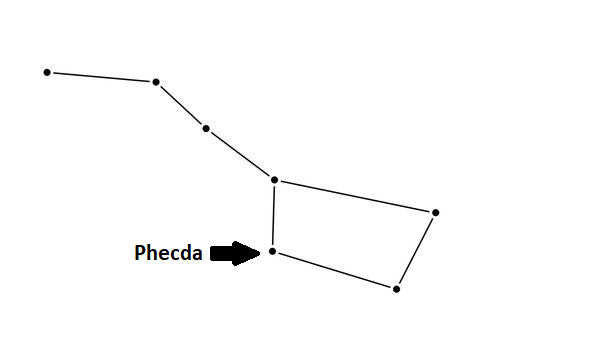 PHECDA, the Thigh of the Bear;
PHECDA, the Thigh of the Bear;
the Iron Foreleg of Set;
Set drowning and dismembering Osiris;
transformation through tribulation;
alchemy from trauma to triumph;
the saturnine Elephantfish.
Phecda (“The Thigh”) is the lowermost star on the “handle” side of the Big Dipper, or the “hind leg” of the Great Bear. This gate refers to Set’s role in the Osirian drama, in which He resembles a gardener trimming a rosebush. Trimming is disturbing and painful to the plant, but it also rejuvenates the plant and makes it bloom fresh roses. This speaks to experiencing a life-changing crisis, then processing and healing from that experience over time to become a healthier, stronger person. The unpleasant nature of this particular cycle is what leads most non-Setians to assume that Set is either “chaotic” or “evil”; and to be honest, even most Setians would probably prefer to avoid this gate (myself included). But Phecda is really not about chaos or evil; it is simply about bringing the regenerative powers of nature and the self into play, whether we like it or not.
The “Phecda” Key (click to enlarge)
The Merak Gate
MERAK, the Loins of the Bear;
the Iron Testicles of Set;
Set manifesting upon Geb;
Set’s libido and progeny;
Setian people, creatures and things;
distinctions between Setians and others;
the unbridled Donkey.
Merak (“The Loins”) is the farthest of the two “pointer” stars, residing in the Great Bear’s genitals. This gate refers to “being of Set”—whether this means being an F5 tornado, a donkey, or even just a person with red hair. People, creatures and things of Set are His manifestations in nature. By extension, Setians are not just His worshipers; we are also “little Sets” right here on earth. We are neither “slaves” nor “playthings” to ANY deity, and we endeavor to love ourselves at least as much as we love our Namesake.
The “Merak” Key (click to enlarge)
The Dubhe Gate
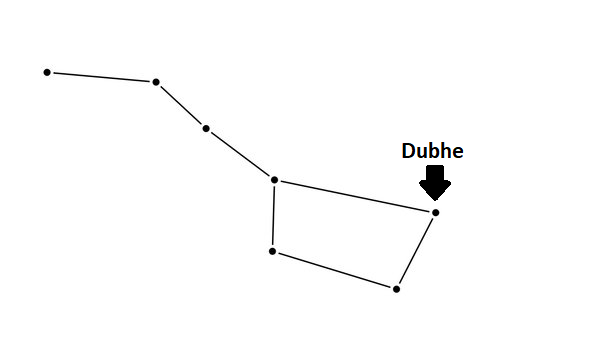 DUBHE, the Backbone of the Bear;
DUBHE, the Backbone of the Bear;
the Iron Bone of Set;
Set coming forth from Nut;
Set’s autonomy and deathlessness;
perseverance on earth and in Duat;
eternal alignment with Set;
the immovable Sha.
Dubhe (Arabic for “The Bear”) is the star that connects the Big Dipper to the constellation of Ursa Major (the Great Bear). It sits on the “spine” of the Bear, and it is the closer of the two “pointer” stars that point to Polaris, the Pole Star. (The second “pointer” star is Merak.) You can use Dubhe to draw an imaginary line to Polaris, which is an ancient method for locating true north. For ancient Setians who lived out in the North African deserts, it must have seemed like the Dipper was always there to guide them as they traveled at night.
For me, Dubhe is about the basic Setian attitude that autonomy and self-determination are inalienable rights for all people, regardless of race, sex, gender, sexual orientation, social class, religion, etc. It also relates to the Imperishable Ones, ancestral souls and spirits who have attained or been given Set’s linear immortality in the afterlife, and who fight off isfet monsters with Him beyond the northern sky.
The “Dubhe” Key (click to enlarge)


